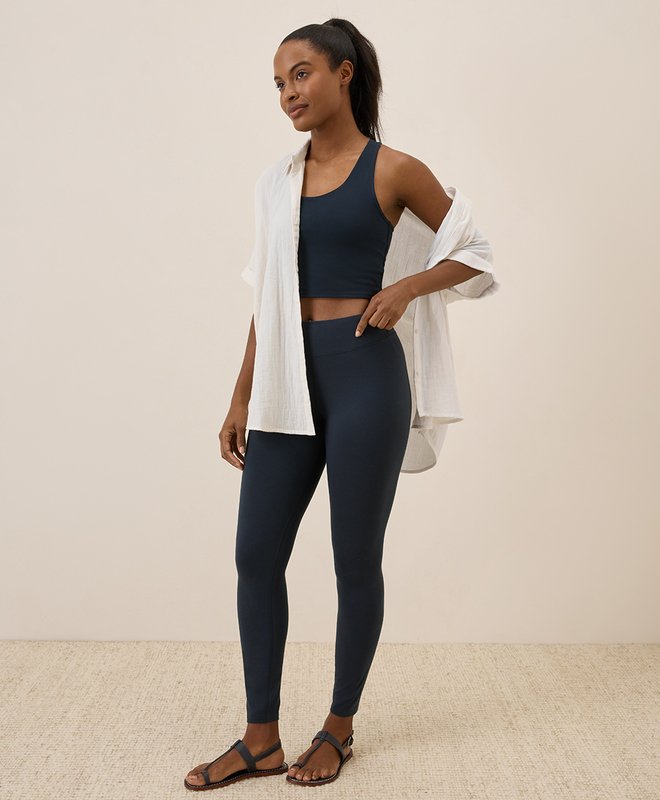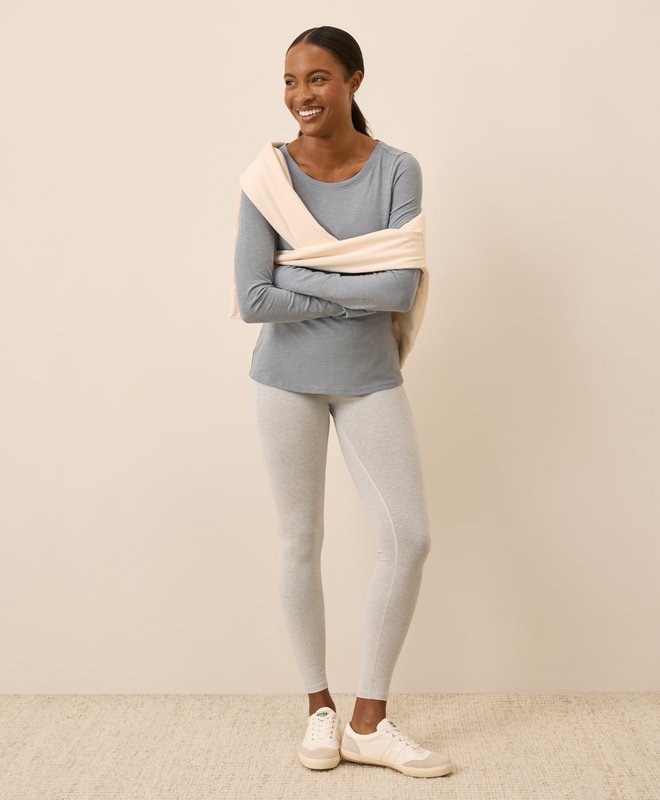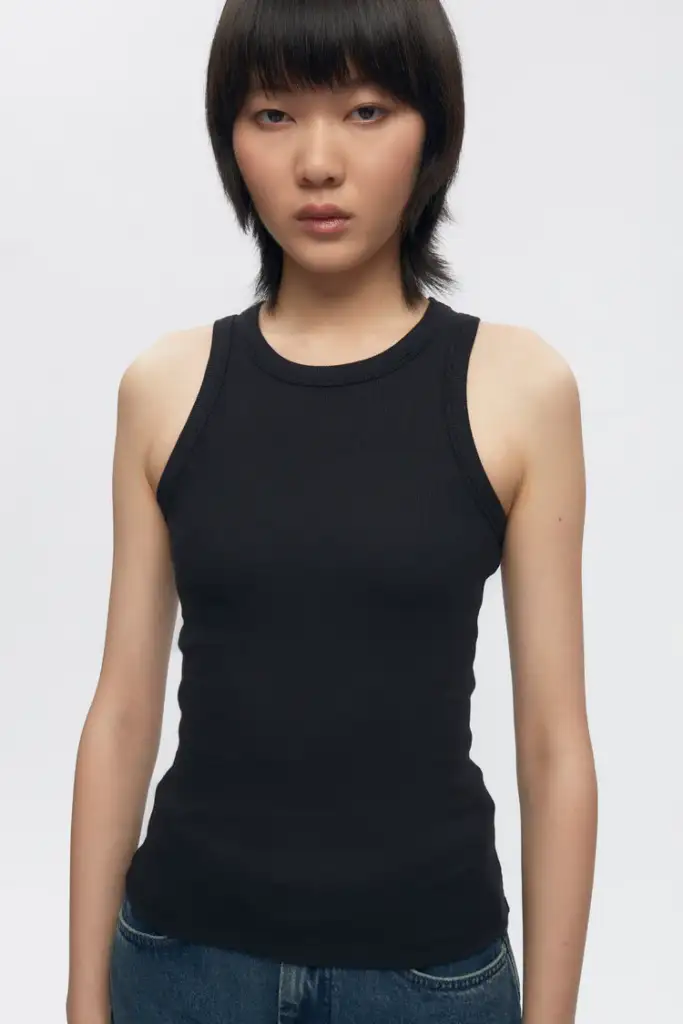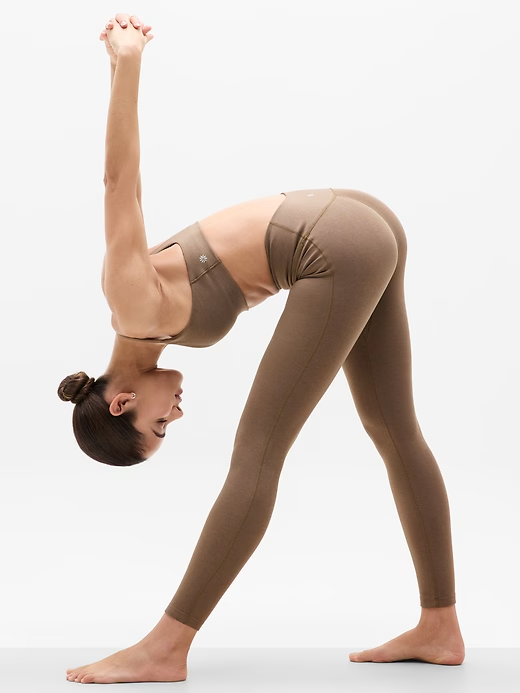Why I’m Breaking Up with Plastic Activewear & Embracing Cotton

Share This Article
Say goodbye to nylon, polyester, and other plastic clothes. Buy these workout clothes made from cotton instead.
| All products featured on The Wellness Feed are independently selected by our editors for their environmental and ethical impact. However, we may earn an affiliate commission when you buy something through our retail links. |
I used to be a Lululemon girl. Before that I was all about Nike, proud of my matching sets when I popped into my run clubs. And, for the most part the performance materials felt comfortable. Yet, as a self-described ‘conscious shopper’, there was something that didn’t quite sit well with me. If I have a closet with only natural materials- cashmere, wool, silk, linen, and cotton- why does the same dedication not apply to the draw labeled ‘activewear’? The excuse was, “I can’t find cotton leggings, sports bras, and hoodies.” The truth is that a 10-second Google search showed that even Amazon offers packs of cotton leggings that are Oeko-Tex certified.
With activewear now a staple in our wardrobes, I realize I have to uphold my standards for natural fibers in that part of my wardrobe too. Because the truth about polyester, spandex, and other plastic-based fabrics is more often than not, they’re causing more harm than good. If I won’t buy a polyester dress, why would I buy polyester leggings? So, I’m making a change to ditch the plastic-based activewear for natural cotton. Here’s why I’m doing it, what I’m buying instead, and why you might want to consider the switch too.
The Environmental & Health Toll of Synthetic Activewear

Kotn Women’s Cozy Crewneck is made from 100% Egyptian cotton and ethically made in Egypt. $88
Polyester, nylon, and spandex are popular because they stretch, dry quickly, and are durable. But, the benefits end there and are grossly outweighed by the negatives.
Plastic-based fabrics come from non-renewable resources—mainly oil and use a lot of energy and water during production. It takes more carbon emissions to make plastic fibers than natural fibers like cotton. Factories emit greenhouse gases that contribute to climate change. And, these materials may contain chemicals like dyes, flame retardants, and finishing agents that have been linked to adverse health effects such as asthma, hormone disruption and cancer. From the factory workers who make these clothes, to consumers like your and me, when we come in contact with these clothes we put ourselves at risk of exposure to these chemicals.
Pact On The Go-To Legging Set is made from GOTS certified organic cotton in a Fair Trade certified factory $88 (Sale $49)

The negative impact of plastic-based clothing continues when we wash and dispose of clothing. Washing sheds tiny microfibers that are too small to see, called microplastics. These are released into water systems where they flow into oceans, hurting marine life and polluting our water resources. A host of alarming studies and reports now show that after decades of washing plastic clothing, microplastics are found everywhere- from leisure drinks like beer to the human brain. And, since plastic isn’t biodegrade, it doesn’t break down. Instead it accumulates in our environment and bodies.
About 8,000 chemicals are used to turn raw materials into textiles. They can be absorbed primarily through the skin, but also by inhalation in case of toxic chemicals that evaporate or through oral absorption, especially in babies.
OEKO-TEX® Product Manager Dr. Julian Koschmieder
As someone who is aware of the negative impacts of polyester and plastics, I’ve made concerted efforts to remove unnecessary plastic from my home. I shop for natural materials when it comes to what I wear. My sheets, towels, and other linens are just that linen or cotton. I’ve swapped plastic sponges for cotton cloths to clean my home. The benefits are that I feel at ease knowing that my home contributes less to microplastics and the materials my family use are less likely to cause harm. So, it only makes sense to have these same benefits when it comes to my activewear.
The Environmental and Health Benefits of Cotton

Pact On The Go-To Pocket Legging is made from 90% organic cotton and in a Fair Trade certified factory $48 (Sale $30)
Cotton is a natural fiber that promotes air flow and lets your skin breathe. When you work out in cotton, sweat is absorbed quickly, helping you to stay dry. But, the benefits don’t end there. When compared to polyester and other plastic-based fabrics, cotton is better for the environment and your health too.
Compared to the production process of polyester, cotton fabrics have a small environmental footprint. It isn’t sourced from a non-renewable resource like fossil fuels. It requires less energy and water use during production. And, cotton fabrics can degrade within several months compared to the tens or hundreds of years it can take for polyester to degrade.
Kotn Women’s Racer Tank is made from 95% Egyptian Cotton, 5% Spandex and is ethically made in Egypt. $38. Kotn is a certified B Corp.

As mentioned before, many synthetic activewear pieces are chemically treated to improve elasticity and color. These chemicals can cause skin irritations or allergic reactions, especially for sensitive skin types. Cotton, on the other hand, is not. And, if you look for labels like Oeko-Tex and Organic Cotton Standard, you’ll go a step further to ensuring that the materials you’re buying are organic and toxin-free.
Soft, flexible, and breathable — personally I think cotton just feels better. It’s also easy to wash. And, I can reserve energy (and shrinking) by hanging my clothes to dry versus putting them in the dryer.
The Ethical Consumer Conclusion

Athleta Intuition Ultra High Rise Cotton Leggings are made from 53% Cotton/17% Recycled Polyester/16% Spandex/14% TENCEL™ Modal. $89 (Sale $45) Athleta is a certified B Corp.
Cotton athleisure wear aligns with my values and priorities when it comes to the items I fill my home with. Of course, like most things in life, cotton is not without its caveats. Overconsumption has driven unsustainable farming and production practices when it comes to cotton. To sidestep this negative impact, I’ll focus on brand that have certifications for organically or regeneratively-grown cotton. Did you know that organic cotton uses an estimated 90% less water than conventional cotton? I’ll also look for Oeko-Tex labels to ensure that the best environmental and health standards have been met when it comes to dyes.
Organic Basics Soft Knit Rib Leg Warmer is made from 71% Organic Cotton, 28% Recycled Nylon, 1% Elastane in an ethical factory in India. $36 (Sale $29)

These are tips I’d recommend when searching for more sustainable alternatives to plastic-based activewear. Check labels for organic or eco-certified cotton products. Invest in better activewear will last longer and perform better. Sure, these workout clothes in cotton might not have the easily identifiable logos on them, but what they do have is a better impact on the the planet and your health in the long run.
